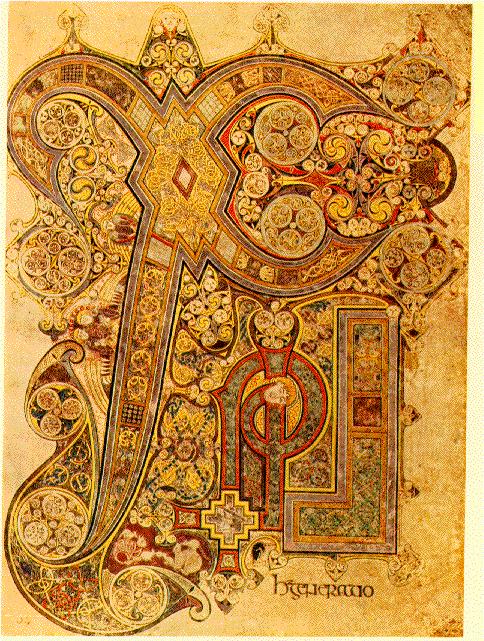|
IRELAND

A page from the Book of Kells, the finest surviving Irish Celtic manuscript.
Ireland was never invaded by either the Romans or the Anglo-Saxons. It was a land of monasteries and had a flourishing Celtic culture. As in Wales, people were known by the family grouping they belonged to. Outside their tribe they had no protection and no name of their own. They had only the name of their tribe. The kings in this tribal society were chosen by election. The idea was that the strongest man should lead. In fact the system led to continuous challenges.
Five kingdoms grew up in Ireland: Ulster in the north, Munster in the southwest, Leinster in the southeast, Connaught in the west, with Tara as the seat of the high kings of Ireland.
Christianity came to Ireland in about AD 430. The beginning of Ireland’s history dates from that time, because for the first time there were people who could write down events. The message of Christianity was spread in Ireland by a British slave, Patrick, who became the “patron saint” of Ireland. Christianity brought writing, which weakened the position of the Druids, the members of the Celtic priestly and learned class, who depended on memory and the spoken word. Christian monasteries grew up, frequently along the coast.

The round tower of Devenish is one of only two that still stand at Celtic monastic sites in Ulster, Ireland. This one was built in the twelfth century AD. The entrance is about three metres above the ground level, and had a ladder that could be pulled in so that enemies could not enter.
 13/30
13/30

|